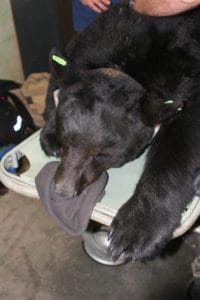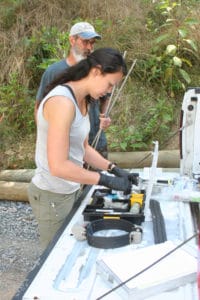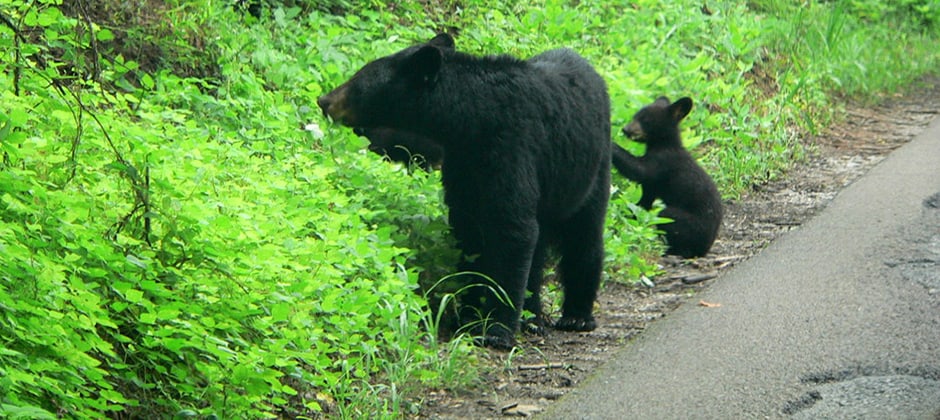Share this article
JWM: Bears learn human tolerance outside national parks
Some of the black bears that get too close to people in the Great Smoky Mountains National Park may have taken a liking to human food outside the park.
Wildlife managers in Great Smoky Mountains National Park in Tennessee and North Carolina have dealt with black bear (Ursus americanus) issues for decades. Problems usually start when bears raid garbage cans, picnic areas or campsites at night in search of human food.
Park rangers have tried to discourage these bears from seeing human food as a viable resource by shooting them with tranquilizer darts or paintball guns in an effort to scare them away from these areas.
But once these bears become more brazen, seeking out human food during the day, there isn’t much that can be done to discourage the behavior.
“You can shoot those bears [with paintballs], or immobilize them, but it just doesn’t work,” said Joe Clark, a research ecologist with the U.S. Geological Survey and one of the co-authors of a study published recently in the Journal of Wildlife Management on the bears.
But while managers had been keeping tabs on the so-called conflict bears that had started to develop more tolerance for human areas at night, they noticed that some bears that approached human areas during the daytime were unfamiliar to them.

A male black bear collared for the recent study. ©Sherri Clark
They believed these bears may have come from outside of the park, where they learned this behavior. So they set out to track bear activity.
They put tracking collars on both conflict and non-conflict bears and followed their movements in the national park and surrounding area from 2015 to 2017. Stable isotope analysis also revealed what each of the bears ate, whether it was food from humans or more wild resources.
They found that many of the 53 collared bears had home ranges that were far greater than the boundaries of the national park itself. Many of them were found in surrounding communities, using parks or forested areas as wildlife corridors into more rural areas.

Senior author Jessica Braunstein and Joe Clark prepare to immobilize a bear for research. ©Sherri Clark
“We found these conflict bears that moved through urban areas were a lot different from non-conflict bears,” Clark said, adding that the conflict bears were more likely to cut through areas like parking lots or streets than those that hadn’t become more tolerant of humans.
Wildlife managers may have to think beyond the borders of the national park if they want to decrease human-bear conflicts, he said. Some nearby communities have rules that residents must use bear-proof garbage cans, and Clark said that the situation in the area might improve if more communities required them.
While wildlife corridors connecting wild areas are usually good for increasing animal movements, which can be advantageous to them from a demographic or genetic standpoint, Clark also said that some corridors can be ecological traps, particularly when they lead the bears to areas where they may have no wild food resources. Cutting access to these areas for bears may ensure that less individuals become tolerant of human presence.
This article features research that was published in a TWS peer-reviewed journal. Individual online access to all TWS journal articles is a benefit of membership. Join TWS now to read the latest in wildlife research.
Header Image: Black bears that become used to humans may be learning this tolerance outside of the boundaries of Great Smoky Mountains National Park. ©Lee Coursey








